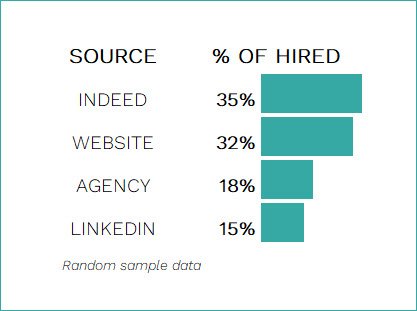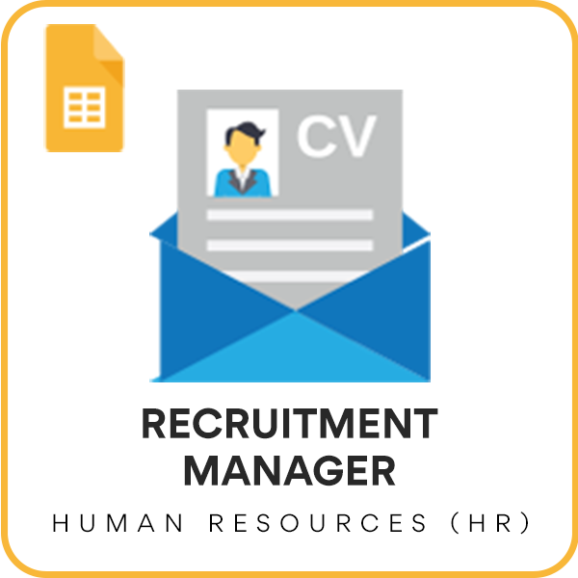10 Questions about your Recruitment Program
If you are in charge of the recruitment program in your company, you should have answers to these 10 questions. I will give my reasons why.
I request you to note down how many you have answers to and post your score out of 10 in the comments below.
If you have answers to all 10, then you can pat yourself on the back and feel very proud of how data-driven your HR organization is.
If you do not, no worries. I will provide you a solution you can use to get the answers for your company’s recruitment program.
Question #1: How big is your recruitment program?
Let’s start with basics.
Do you know how many employees were hired during the last month or last year?
How many applications you receive monthly, how many offers you gave and how much is spent on recruitment efforts?
basic recruitment metrics
If you are taking charge of a new recruitment program, you should be asking this. This will help you size up the scale of the program.
Question #2: How is the recruitment funnel performing?
Each company has its own recruitment process with specific stages in their hiring procedure. Here is a simple example.
recruitment process - stages
There are 6 stages and selected candidates move from one stage to the next.
Each candidate submits an application
HR representative conducts an interview
Hiring Manager does an interview
There is a technical interview, assuming this is a technical role.
The company provides the candidate an offer.
When the candidate accepts, the candidate is hired.
Now an important question is how the funnel has performed.
recruitment funnel
In this example, out of every 100 applications submitted, 60 were selected for HR interview, 50 for Hiring Mgr Interview, 15 for Tech Interview, 3 were offered a job and 2 accepted.
The funnel tells you how effective your recruitment process is.
In every stage, candidates are dropping off. By studying the drop-offs, you can then improve the funnel.
50% make it to the hiring manager interview but only 15% pass the hiring manager interview. There is a significant drop-off at the hiring manager interview.
Now, if some of the screening questions (where possible) can be moved to the HR interview, then fewer candidates need to be sent to the Hiring manager interview thus saving time for the whole company.
If you know how the funnel for your program actually looks, you can make changes needed to achieve your program’s objectives.
Q3: What are the top reasons for declining applicants?
In the recruitment funnel we saw applicants dropping off in each stage. But why?
Example:
application decline reasons
In this example, Salary expectations, Technical qualifications and lack of Experience are the top reasons why the applications are not being selected.
By knowing why, you can improve your recruitment stages and interview process so that such non-compatible candidates can be removed from our funnel as early as possible. This will save the company time and money.
In some cases, you need to modify job description and salary, or modify sourcing process to improve the fit between the candidate pool you are sourcing and the job that you are hiring for.
To look at the other possibility, even your offers can get declined by the applicants.
By knowing why candidates are rejecting offers, you can either change offer, your recruitment process, or you job description to ensure that offers rejections are minimized. This will save the company time and money.
Question #4: Which is the most important source channel?
Just purely on volume, which channel brought the most new-hires to your company.
Companies typically receive applicants from multiple sources. You need to make sure that you understand the source mix that is currently contributing to hiring.
source channels' contribution
In this example with completely random data, Indeed and Company website brought 67% of hires.
If you hired 100 new employees last month, then 67 came via these two sources. This tells you that you need to pay close attention to these two sources and anything going wrong with these sources can make it more difficult to achieve your hiring goals.
Please note that I am not saying these channels are the best or these channels are the most efficient.
Question #5: Which source channel is most effective and efficient?
Just because a channel brings you new hires, it does not have to be most efficient.
Source Channel - Analysis
In this sample random data, we have Indeed channel that feeds a lot of applications (44) but converts at a lower rate (15%).
On the other hand, you can have a channel Agency that feeds fewer applications (10) and fewer hires, but conversion rate (30%) is very high. That conversion rate also comes at a cost. Cost per hire is very high ($200) compared to other channels.
Such information will help decide the investment choices when it comes to sourcing channels. We should invest more money in channels that bring higher quality candidates at a lower cost.
Question #6: How long does it take to fill an open position?
This question is about timelines. How long does it take on average to fill a position in your company? 60 days, 100 days?
Let’s take a look at this graphic.
Recruitment Process Timeline
Time to fill is time taken from job posting to when the new employee joins.
The longer you have an open position, the more the loss for the company. So, actions should always be taken to reduce the time it takes to fill.
This metric measures the complete window of time.
Time to Hire measures time from the Application Received date to offer acceptance date (or hire date)
This represents how fast applications are reviewed, interviews are scheduled, conducted and decisions are taken.
Knowing your process duration, you can provide more realistic plans to the business on filling the open positions.
Question #7: Why does it take that long to fill open positions?
Knowing how long is great. But why does it take that long?
Do you have too many stages or does a specific stage take an extremely long time?
Time to fill Open positions
In this example, it takes on average 56 days to fill a position.
Out of that, 27 days were time from hiring to actually joining work. Among the other stages, Tech interview takes the most time, 10 days, to complete.
By identifying the bottleneck, you can address the reason. Our goal is to get the position filled as soon as possible with the right candidate.
Question #8: Which recruiters are the best performers?
You may have some recruiters performing exceptionally in metrics and you would want to learn their techniques. As a leader, you identify best practices and implement them across the rest of the company.
Analyzing Recruitment Metrics by Recruiter
An important aspect of HR analytics is to understand what is working well so that you can do more of it and knowing what is not working so that you can do less of it.
It is not just recruiter. It could be the high performing departments, hiring managers or locations.
The concept is you need to have insights at a segment level in addition to knowing the overall company-wide metrics.
Question #9: Is your team performance getting better or worse?
We have so far discussed a lot of metrics and analyses, the fun thing is that this fun never ends. You have to do this regularly, may be every month.
Measuring Recruitment Metrics over Time - Monitoring Trends
Once you know the current state of the process, you set targets or goals to improve for the next month or next 3 months. And you need to monitor it to ensure you are progressing and meeting your targets.
This is where trend charts become valuable.
Question #10: What are you dealing with, right now?
I have listed this as 10th question. However, if you have just taken up responsibility of a recruitment program, you might be asking this question first.
What are you dealing with, right now?
It is quite possible that before analyzing the past performance, reviewing the dashboards, and figuring out your long-term strategy, you might be asked to just get today’s stuff done.
How many jobs are currently open and being actively hired? How many days have they been in market?
Open Positions right now
How strong is our active candidate pipeline? In other words, how many applications are pending review?
Active Pipeline - Applications under review
By having access to this information, you can decide your immediate actions to keep things moving.
Now, it’s your turn
Did I miss out on any crucial questions? I want to hear from you. Comments section is all yours. Don’t forget to put your score in the comments. How many out of these 10 questions did you know answers to , for your company’s recruitment program?
If your score is not high, no worries. Promised you that I will have a solution for you.
I have 3 solutions and you can pick one you prefer.
You can get all of the metrics and analysis TODAY, with our templates.
Here’s a solution.
I offer you a 15-minute promise. Enter your jobs and applications data and you are done. You will get all these amazing insights about your recruitment process that you didn’t have before.
Whether you use Microsoft Excel, Google Sheets or Power BI, we got you covered. Just click on the button below to learn more and download the template.
Recruitment Tracker & Dashboard built using
Microsoft Excel
Recruitment Tracker & Dashboard built using
Google Sheets
Recruitment Tracker & Dashboard built using
Microsoft Power BI
A successful recruitment process aims to fill open positions with high quality candidates as quickly as possible with minimal cost.
A good recruitment reporting and analysis setup should measure or track all the 4 above-mentioned components and provide insights to optimize them.
This is what we try to provide with our simple and effective HR templates.















